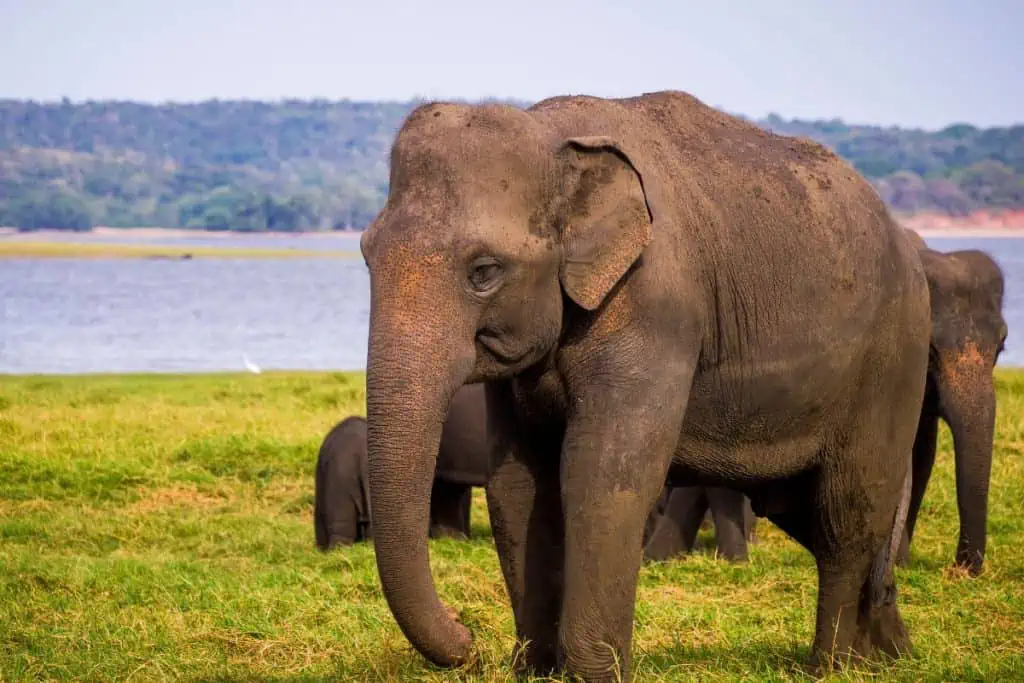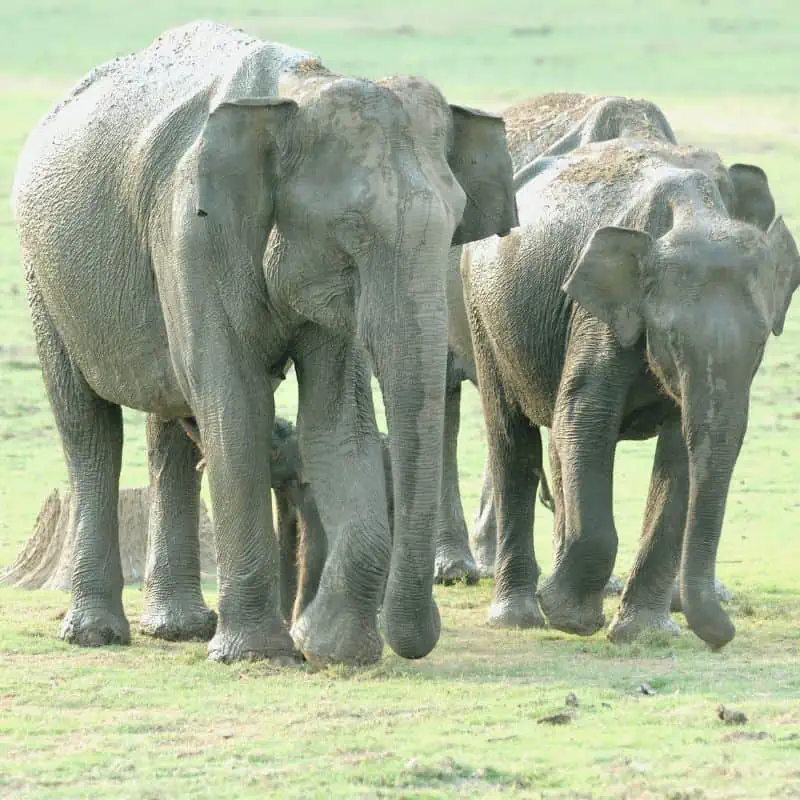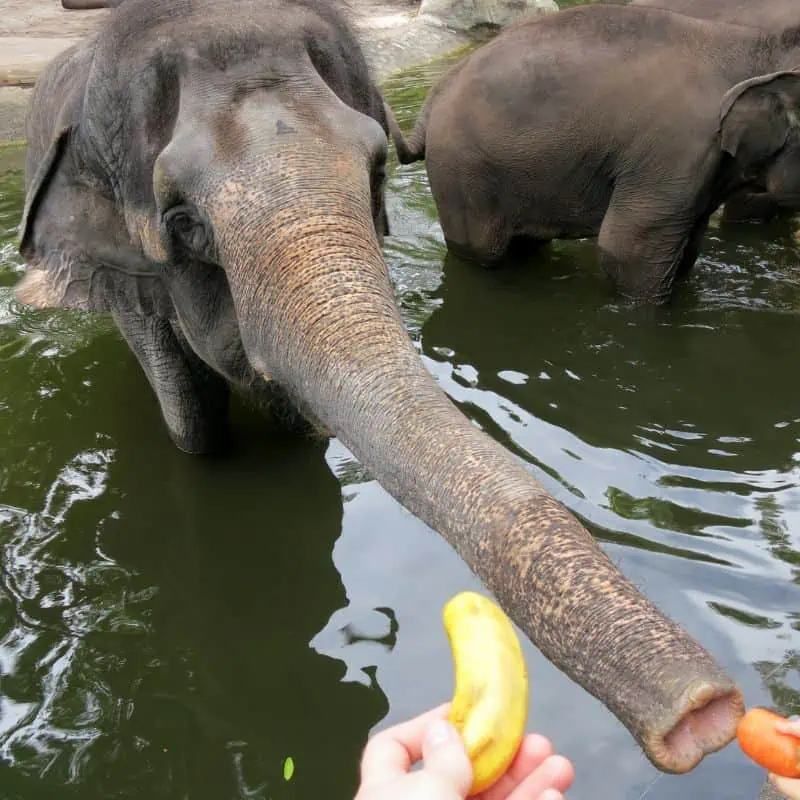Weighing twice as much as a car, Asian elephants are enormous mammals with large diets. They’re important religious and cultural icons, with thousands of people worshiping and treasuring them. So, what is so unique about them?
Asian elephants are the largest living mammals on the continent, weighing over 5000 kilograms. Their color varies from dark gray to brown, with pink and yellow spots on their trunk, face, and ears. Their small round ears and extra toenails distinguish them from their African counterparts.
With unique features and extraordinary characteristics, the Asian elephant is unlike any other animal. This article covers ten interesting facts about them.

- 1. Asian Elephants Are the Largest Mammals in Asia
- 2. They Are Dark Grey With Pink or Yellow Marks
- 3. Female Asian Elephants Lack Tusks
- 4. They Have a Matriarchal System
- 5. Asian Elephants Communicate Through Various Sounds
- 6. They Have a Strong Sense of Smell
- 7. 150 Kilograms of Plant Material Is Their Daily Diet
- 8. Their Gestation Period Is 18-22 Months
- 9. Asian Elephants Have Three Subspecies
- 10. The IUCN Lists Them as Endangered
- Final Thoughts On Asian Elephants
- FAQs
1. Asian Elephants Are the Largest Mammals in Asia
Asian Elephants can weigh up to five tonnes, making them the largest mammal in Asia. However, they are still smaller than their African counterparts, which weigh up to seven tonnes.
Most males, called bulls, weigh approximately 4,000 kg and reach a height of 2.8 m (at the shoulders).
On the other hand, females, called cows, weigh about 2700 Kg on average, with a height of 2.4 m (at the shoulders).
Both male and female Asian elephants reach a length of 5.5 — 6.5 m.
2. They Are Dark Grey With Pink or Yellow Marks
Asian elephants have dark gray to brown skin, often with spots of pink or yellow on their ears, trunk, and face.
Although they look pretty similar to African elephants, they are distinguished by their smaller, rounder ears and two extra toenails, one on each foot.
3. Female Asian Elephants Lack Tusks
While most of us may consider tusks part of an elephant’s basic anatomy, female Asian elephants don’t have any.
It makes them less vulnerable to becoming a victim of ivory poaching.
Additionally, several male Asian elephants are also tuskless. Only 5% of the males found in Sri Lanka have tusks.

4. They Have a Matriarchal System
Female elephants are more social than males.
They form herds with other female relatives and babies. The pack is often led by the group’s largest, oldest, or most experienced female.
On the other hand, bulls prefer to live alone.
They may sometimes form small groups with other bulls. However, these are often short-lived, and the group splits soon to live solitarily.
5. Asian Elephants Communicate Through Various Sounds
Asian elephants make three different sounds, each with a significant meaning.
1. Growls
Their growls are the most basic sound used for communicating at short distances.
The growls may become rumbles by resonating in the trunk when the elephants become mildly aroused. They may also escalate into roars for communicating at a slightly longer distance.
2. Squeaks
The Asian elephants squeak in two different manners; trumpets and chirpings.
The trumpets are long squeaks that are very loud. They display extreme arousal.
Their chirping is a sign of nervousness or conflict. It consists of several short squeaks.
3. Snorts
The snorts signal a change in activity to alert the herd. They may also be used to display arousal. The snorts become louder as the elephants get more aroused.
4. Infrasonic Rumbles
Infrasonic rumbles are used to communicate over long distances. Humans can barely hear these low-pitched sounds.
Moreover, other elephants can hear these sounds more than two miles away.
Scientists believe communicating using infrasonic rumbles is essential for the elephants’ survival. Females use it to hone in on males when they are in heat.
6. They Have a Strong Sense of Smell
Asian elephants use their highly developed olfactory system to communicate with others over short and long distances.
Scents traveling in the air make them aware of the presence of other elephants or threats.
They can identify the sex and reproductive status of other elephants by using their trunks to smell their mouth, genitals, temporal gland, or urine and feces.
7. 150 Kilograms of Plant Material Is Their Daily Diet
Asian elephants spend almost three-quarters of their days eating and looking for food.
They do not eat continuously. Instead, they have three main feeding bouts in the morning, afternoon, and night.
They eat between 75 to 150 kilograms of food each day and drink about 200 liters of water.
A huge male may even eat twice this amount. Sometimes, the elephants may even travel 50 miles daily to look for food.
Their diet consists mainly of grass. But they also eat leaves, vines, roots, shoots, bark, twigs, and fruit.

8. Their Gestation Period Is 18-22 Months
Asian elephants are pregnant for 18-22 months.
The gestation period is longer as the baby’s brain develops at birth. It’s born with complex cognitive abilities and instincts to thrive in its environment.
The mother and other females (called aunties) in the herd look after the newly born elephant for several months.
In favorable conditions, females give birth to calves every 2.5- 4 years. So, considering their average lifespan of 60-70, most females give birth to only four or five babies.
9. Asian Elephants Have Three Subspecies
The Asian Elephants are divided into Indian, Sumatran, and Sri Lankan subspecies.
The Indian subspecies have the widest range, and most Asian elephants fall in this category. The Sri Lankan one is the largest subspecies, while the Sumatran is the smallest.
10. The IUCN Lists Them as Endangered
Asian elephants are on the red list of the International Union for Conservation of Nature (IUCN). Only 52,000 of them are left in the wild.
In the past, Asian elephants lived all over Asia. But, now, they are restricted to 15% of their original range.
Scattered isolated populations of them are found in thirteen countries in South and Southeast Asia.
Final Thoughts On Asian Elephants
The Asian Elephant is a magnificent species with several unique features that set it apart from other animals.
Unfortunately, this fantastic beast is on the brink of extinction, with only 50,000 left in the wild.
We must all unite and save this species by protecting its habitat and donating to conservation organizations to save Asian elephants from disappearing.
FAQs
How Many Asian Elephants Are Left?
There are less than 50,000 Asian Elephants left in the wild today.
What Does the Asian Elephant Eat?
Asian elephants eat grass, leaves, fruit, shoots, roots, bark, and vegetation. Adults can eat over 150 kilograms of food in a day.
What Kind of Predator Eats Asian Elephants?
Adult Asian elephants have no predators in the wild. However, the young ones may be eaten by tigers.
